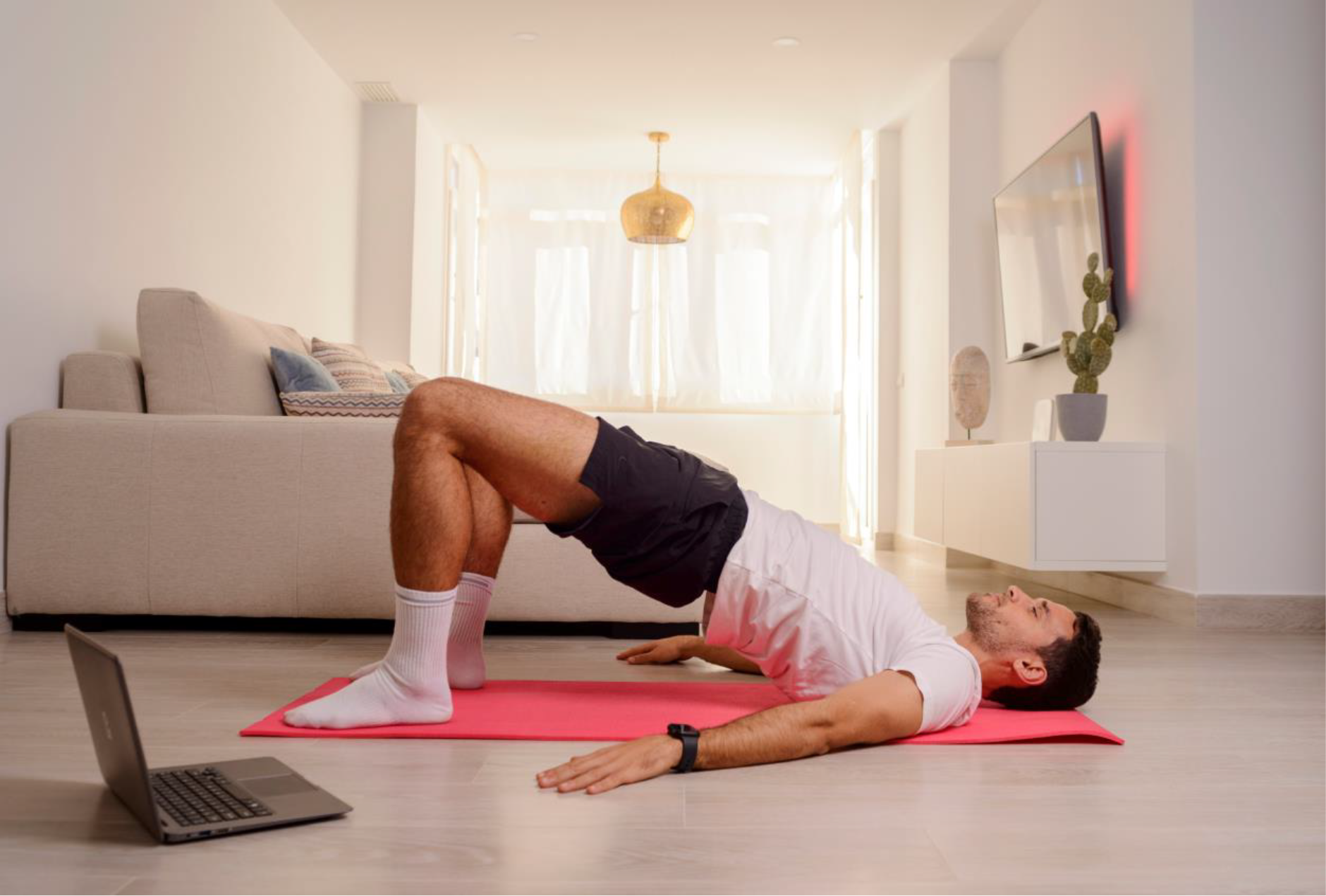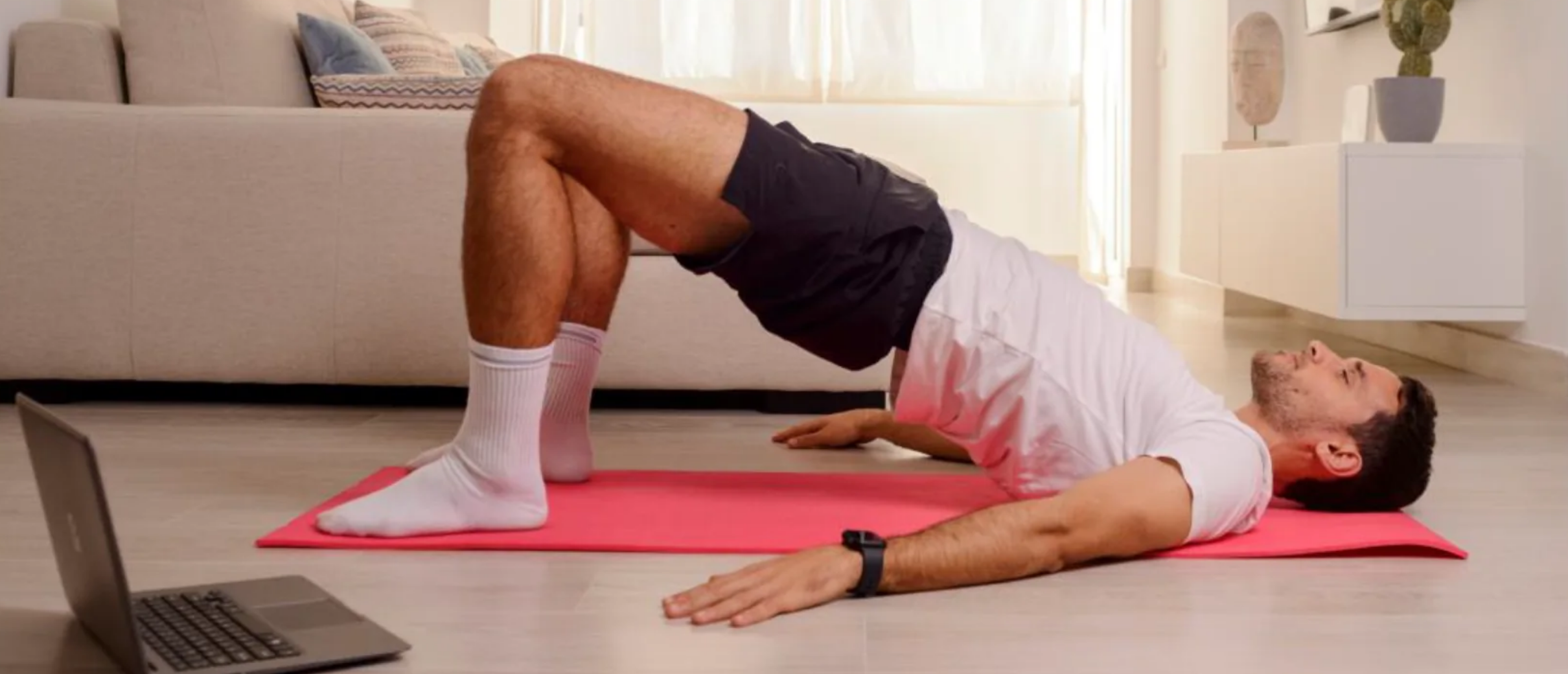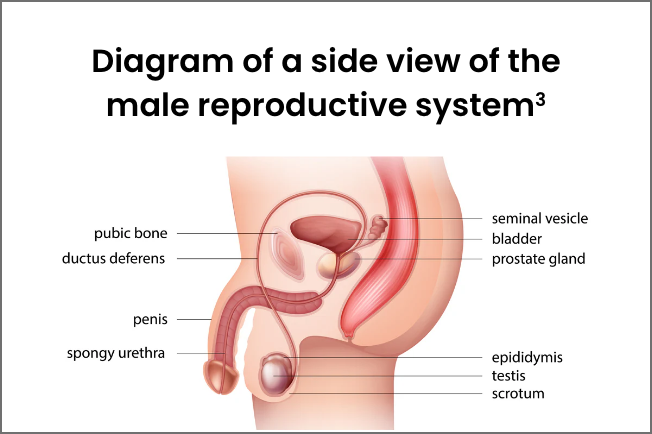

Kegel & Pelvic Floor Exercises for Erectile Dysfunction
Share:
Can a simple exercise routine improve your sex life? You’re in the right place if that question has ever crossed your mind. We’re taking a closer look at how Kegel and pelvic floor exercises can address erectile dysfunction in a surprisingly effective way.
We’ll break down the science behind ED and explore just how vital strong pelvic floor muscles are for maintaining a healthy and satisfying sex life. Whether you’re curious about the connection between these exercises and ED or looking for practical tips to improve your sexual health, we’ve got you covered.
What is erectile dysfunction?
To start, let’s look at what erectile dysfunction is.
Erectile dysfunction, also known as impotence, is the inability to achieve or maintain an erection for satisfactory sexual intercourse.1 And it’s more common than you think, with nearly 1 in 3 men in the UK having dealt with it at some point in their lives.*
Although the definition of ED doesn’t specify an exact duration of experiencing symptoms, some experts suggest that if the problem lasts for six months or longer, it may be considered ED.
ED is quite common in men aged 40 and above, with its occurrence rising as age and other health issues increase.2 Regardless, this condition can affect men of all ages and has various underlying causes.2 So, if you find yourself dealing with it, you’re definitely not alone.
*Estimated from the Office for National Statistics (ONS) 2021 UK population data and Irrational quantitative survey 2021, where 3,445 (i.e. 34%) of 10,197 adult men qualified or identified as suffering from Erectile Dysfunction.
What is your pelvic floor?
The pelvic floor is a group of muscles located at the base of your pelvis.3 Think of them like a hammock stretching from your tailbone at the back to your pubic bone at the front. These muscles support your bladder, bowel, and in men, the prostate.3 Strong pelvic floor muscles can help you maintain your erections and control ejaculation.1 Here is a diagram to see exactly where these muscles are:

Why do Kegel exercises help erectile dysfunction?
Well, sometimes, we tend to take our pelvic floor muscles for granted. When we neglect them, they can become weaker and cause problems.3 It’s all about toning a muscle called the pubococcygeus (PC), part of your pelvic floor.4
This muscle plays a crucial role in achieving and maintaining erections by improving blood flow to the penis and supporting erectile function.4 When you strengthen the PC muscle through regular Kegel exercises, you boost its ability to help you maintain firmer and longer-lasting erections because of the improved blood flow to your penis.
But here’s the thing – it doesn’t happen overnight. It typically takes about 4–6 weeks of consistent Kegel exercises before you start noticing a significant difference in your erections.4
Think of it like any other workout routine: consistency is key. The more you stick with it, the better the results you’ll see. So, stay patient and keep at it – your pelvic floor muscles and your sex life will thank you!
Kegel exercises to help erectile dysfunction
Ready to get started with Kegel exercises? Here are the best exercises for erectile dysfunction, along with steps on how to do them:
1. BASIC KEGEL EXERCISE
1. BASIC KEGEL EXERCISE
Performing this basic Kegel exercise will help you learn how to activate your pelvic floor muscles.5
- Identify the right muscles: The first step is to locate your pelvic floor muscles. For this, imagine trying to stop the flow of urine midstream. The muscles you use to do this are your pelvic floor muscles.5
- Get comfortable: Find a comfortable position, whether it’s sitting, lying down, or standing.
- Contract the muscles: Tighten your pelvic floor muscles and hold for a count of five.
- Release: Relax the muscles completely for a count of three.
- Repeat: Aim for 10 to 20 repetitions, two or three times a day.
Don’t worry if you can’t complete a full set of 10 when you first start doing Kegels. That’s totally normal! Just do what you can and gradually build up to 10 to 20 Kegels three times a day. Keep at it, and you’ll get there in no time.5
2. SITTING PELVIC FLOOR ACTIVATION
2. SITTING PELVIC FLOOR ACTIVATION
Sitting pelvic floor activation is one of the simplest and most effective Kegel exercises you can do. Here’s how:1
- Identify the right muscles: The first step is to locate your pelvic floor muscles. For this, imagine trying to stop the flow of urine midstream. The muscles you use to do this are your pelvic floor muscles.5
- Get comfortable: Sit down in a comfortable chair.
- Squeeze the muscles: Using only your pelvic floor muscles, squeeze as if you're trying to stop the urine flow. Hold this squeeze for five seconds, then relax.
- Repeat: Perform this squeeze-and-hold action eight to ten times. Aim for three to five sets of these repetitions.
3. STANDING PELVIC FLOOR ACTIVATION
3. STANDING PELVIC FLOOR ACTIVATION
- Stand tall: Stand straight with your arms by your sides and your feet hip-width apart.
- Engage the pelvic floor: Activate your pelvic floor muscles for three seconds, then relax them for another count of three.
- Focus on isolation: Make sure your stomach, buttocks, and leg muscles remain relaxed and aren't contracting.
Once you're comfortable doing Kegel exercises three times a day, you can start incorporating movements to enhance the routine.4
4. FLOOR LAYING ON SIDE SQUEEZES
4. FLOOR LAYING ON SIDE SQUEEZES
- Get into position: Lie down on your side on the floor.
- Use support: Place a pillow between your knees, ensuring it's big enough to separate your legs comfortably.
- Squeeze and hold: Contract your inner thigh muscles to squeeze your legs together, holding for five seconds.
- Release and repeat: Relax your muscles, then repeat the squeeze-and-hold action eight to ten times. Aim for three to five sets of repetitions.1
5. FLOOR LAYING ON BACK SQUEEZES
5. FLOOR LAYING ON BACK SQUEEZES
- Get into position: Begin by lying on your back with your hands flat on the floor and your knees bent comfortably, pointing upwards.
- Engage your pelvic floor: Contract your pelvic floor muscles, drawing them inward toward your body. Hold this contraction for five seconds, then release.
- Activate your anal muscles: Squeeze your anal muscles as if you're trying to prevent a bowel movement. Hold for five seconds, then release.
- Repeat and set goals: Alternate between steps two and three, completing each action eight to ten times. Aim for three to five sets of repetitions.1
6. PELVIC CURL
6. PELVIC CURL
Here's a classic move straight out of the Pilates playbook.1
- Get into position: Lie down with knees bent, feet flat, and arms by your sides.
- Keep your spine neutral: Ensure you start with a slight gap between your back and the floor.
- Engage your pelvic floor: Exhale and engage your pelvic floor. Lift your pelvis toward your belly button, pressing your lower back flat. Then, lift your buttocks off the floor, squeezing your glutes and maintaining shoulder support. Take three breaths while holding the position.
- Release: Slowly lower back down, one vertebra at a time.
- Repeat and set goals: Start with 3-4 repetitions and work up to 10.
Incorporating these exercises into your daily routine will strengthen your pelvic floor muscles, which can significantly help manage erectile dysfunction. Remember, consistency is key, and it may take a few weeks to see noticeable improvements. Keep at it, and your efforts will pay off!
Your secret weapon against erectile dysfunction
And there you have it! Kegel exercises aren’t just for strengthening your pelvic floor; they’re also a secret weapon against erectile dysfunction (ED). You’re boosting blood flow to the right places by giving those muscles a workout and supporting better, stronger erections. Sure, it might take a few weeks of dedication, but the payoff is worth it!
If you’re looking for a little extra boost in the bedroom, consider teaming up your Kegels with Cialis® Together. It could be like a one-two punch for ED. Cialis® Together helps get the blood flowing where it needs to be, to help maintain an erection.
So, whether you’re flying solo or with a partner, combining Kegels and Cialis® Together could be the game-changer you’ve been waiting for.
Ready to take the next step? Get Cialis® Together and start turning up the heat in the bedroom!
Cialis® Together 10mg tablets. For Erectile Dysfunction in adult men. Before taking Cialis® Together tablets, discuss with your pharmacist to ensure the product is suitable for you. Contains tadalafil. Always read the label.
MAT-XU-2404160 (v1.0) March 2025
